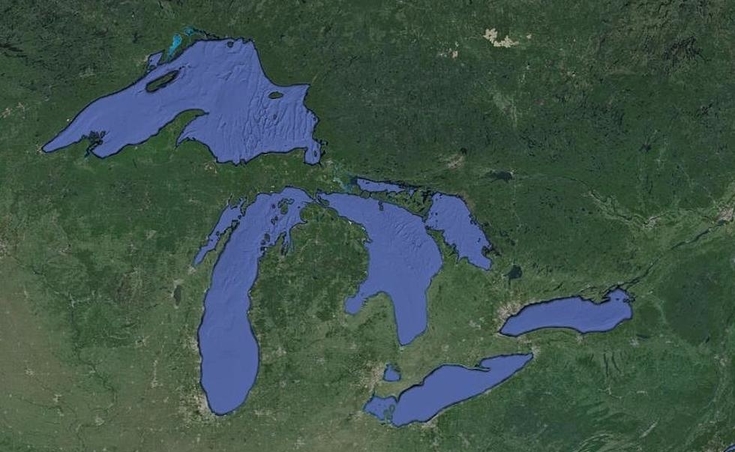
Great Lakes Aquatic Invasive Species
There are quite a few invasive species that call the Great Lakes their home, here are some of the top aquatic ones to look out for next time you are on the water….
Zebra Mussel
Zebra Mussels get their name by the black stripe that is on the back of their shells, these mussels can be found in all of the Great Lakes and in most inland streams and lakes. According to the National Park System, “Zebra mussels will attach to native mussels much like they do docks, and in large enough numbers can prevent the natives from moving, feeding, reproducing, or regulating water properly. The zebra mussels also outcompete the natives for food and space, and because of their fast reproduction can quickly overwhelm a water system.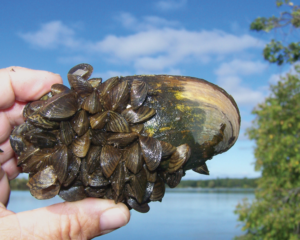
The feeding habits of Zebra mussels can also have a drastic impact on an infested lake. Zebra mussels are filter feeders that siphon particles of plankton from the water. They are highly efficient at this, and a large population of mussels can quickly clear the water of almost all floating particles. This change can cause shifts in local food webs, both by robbing food from native species that feed on plankton and also by increasing water clarity and thus making it easier for visual predators to hunt.”
Prevention is the best way to keep Zebra mussels at bay since their reproductive methods are so efficient through bodies of water. Educating yourself about how to identify Zebra Mussels is a great way to start!
European Frogbit
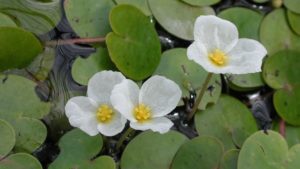
This is a perennial free-floating aquatic species that invade waters with low wave action including wetlands, bays, inland lakes, and canals. Its leaves resemble those of a miniature lily pad and is about the size of a dime to a half-dollar coin. The root system can grow up to 10 in long and do not anchor but are free-floating. These roots become tangle beneath the water surface chocking out native plants and impeding fish and boat passage. This plant can reproduce from plant fragments and produce turions which fall into the substrate in autumn and produce plants the following season.
The negative ecological impacts of invasive European Frogbit include but are not exclusive to altering behaviors and composition of native fish populations and diving ducks, degrading fishing and hunting opportunities. Dense mat of leave and roots prevent native vegetation growth, reducing biodiversity. Water oxygen levels are reduced when large amounts of plants die off causing distress to fish and other organisms.
The best control methods are hand pulling and herbicide use. Prevention is key to stopping the spread of European frog-bit! Learn how to properly identify frog-bit, it can sometimes get confusing as water shield. Avoid working and recreating in places of infestation to impede the spread of the species.
Eurasian Watermilfoil
According to Minnesota DNR, “Eurasian watermilfoil is a perennial plant that flowers twice a year, usually in mid-June and late-July. It can grow up to 20 feet tall, but typically only grows three to nine feet tall. It creates canopy-like structures as it grows toward the water’s surface. It primarily establishes through vegetative fragmentation—a fragment can break off, settle in the sediment, grow roots, and establish a new 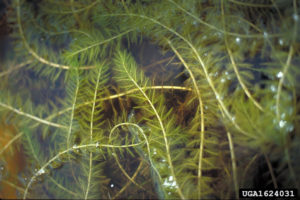 plant. The plant dies back in the fall, but the root system can survive the winter and begin growing again in the spring.” This species loves disturb environments to grow in and can exist in waters from fresh to brackish.
plant. The plant dies back in the fall, but the root system can survive the winter and begin growing again in the spring.” This species loves disturb environments to grow in and can exist in waters from fresh to brackish.
The problem with this invasive species is it forms large mats just like European Frog-bit and it shades out native aquatic plants and impedes recreational activities. This species also doesn’t hold much nutritional value when it comes to a food source for fish, waterfowl, and mammals.
The three main control methods are manual, chemical and biological control.
Curly Leaf Pondweed
This can be identified by its leaves that are dark green with wavy, they have serrated margins, this plant is submerged, and is a perennial herb with thick roots. It can grow to two meters in length and its flowers grow above the water’s surface. It starts growing in the fall and winter and flowers in late spring and dies around late July early August.
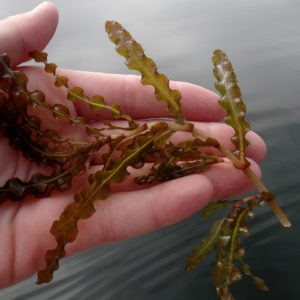
According to Michigan Invasive Species, “curly-leaf pondweed out-competes native aquatic plant species and reduces diversity. Dense colonies can hinder fish movement as well as a recreational activity.” This is the same problem that both Eurasian Watermilfoil and European Frogbit causes.
Problems caused by curly-leaf can be managed by treatment with herbicides or mechanical removal of plants.
Next time you are on the water keep your eyes peeled for these invasive species!
